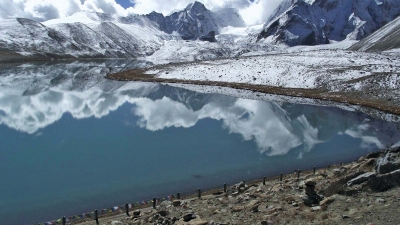
The Kingdom of Sikkim was founded by the Namgyal dynasty in the 17th century. It was ruled by Buddhist priest-kings known as the Chogyal. It became a princely state of British India in 1890. Following Indian independence, Sikkim continued its protectorate status with the Union of India after 1947, and the Republic of India after 1950. It enjoyed the highest literacy rate and per capita income among Himalayan states. In 1973, anti-royalist riots took place in front of the Chogyal’s palace. In 1975, after the Indian Army took over the city of Gangtok, a referendum was held that led to the deposition of the monarchy and Sikkim joining India as its 22nd state.
Roughly three-fourths of Sikkim’s residents are Nepalese in origin; most speak a Nepali (Gorkhali) dialect and are Hindu in religion and culture. About one-fifth of the population consists of Scheduled Tribes (an official category embracing indigenous peoples who fall outside the predominant Indian social hierarchy). The most prominent of these tribal groups are the Bhutia, the Lepcha, and the Limbu; they all speak Tibeto-Burman languages and practice Mahayana Buddhism as well as the indigenous Bon religion. There is a notable Christian minority in Sikkim, as well as a tiny community of Muslims. A small fraction of Sikkim’s people belong to the Scheduled Castes (an official term designating those peoples who traditionally have occupied a low position within the Indian caste system).
The great majority of Sikkim’s population is rural, living in scattered hamlets and villages. Gangtok is Sikkim’s largest settlement. Other notable towns include Singtam, Rangpo, Jorethang, Naya Bazar, Mangan, Gyalshing, and Namchi.
Picture Credit : Google




